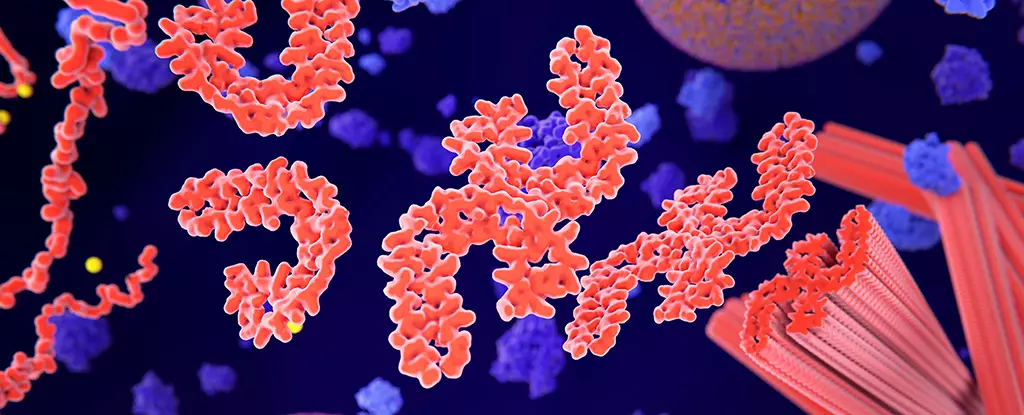Alzheimer’s disease remains one of the most formidable challenges in modern medicine, affecting millions globally and leading to profound cognitive decline. Recent developments offer a glimmer of hope in this ongoing battle, particularly the emergence of a new drug known as RI-AG03. This innovative treatment appears capable of addressing some of the most deleterious aspects of the disease by targeting the underlying mechanisms of tau protein aggregation. The implications of this discovery could transform the landscape of Alzheimer’s research and treatment.
Understanding Tau Proteins and Alzheimer’s Disease
Tau proteins play a critical role in maintaining the structure of neurons by stabilizing microtubules, which are essential for transport within cells. When tau proteins become dysfunctional, they can aggregate into harmful structures called fibrils. These fibrils contribute to neuronal death and are a hallmark of Alzheimer’s disease, disrupting neuron function and leading to the cognitive decline associated with this condition. Thus, any therapeutic approach aimed at Alzheimer’s must consider the dual nature of tau proteins: beneficial when functioning correctly but damaging when aberrantly aggregated.
The Mechanism of RI-AG03
The breakthrough offered by RI-AG03 lies in its unique mechanism of action, specifically its dual-targeting approach to tau proteins. The research team, which includes prominent scientists like Amritpal Mudher from the University of Southampton, identified two critical regions on tau proteins that contribute to their aggregation. By developing a peptide inhibitor, RI-AG03 can potentially prevent these proteins from forming tangles, effectively reducing neuron degeneration.
In preliminary studies using model organisms such as fruit flies, the impact has been striking. The drug extended the lifespan of these insects by as much as 35%, indicating a clear reduction in tau-related damage. Such results reinforce the hypothesis that targeted intervention can yield significant benefits, not only in model organisms but potentially in humans as well.
One of the key challenges in drug design lies in minimizing side effects, especially in treatments targeting the brain. Traditional aggregation inhibitors have often led to unwanted interactions with other proteins, resulting in a host of complications. However, the specificity of RI-AG03 offers a promising alternative. Its design focuses solely on tau proteins, reducing the risk of collateral damage that can arise when other proteins are inadvertently affected. This precision could pave the way for safer and more effective treatments for patients with neurodegenerative disorders.
Despite the promising animal studies, the journey from laboratory breakthroughs to clinical application is fraught with challenges. Many tau-centric therapies have demonstrated efficacy in animal studies but failed to translate into tangible benefits for human patients. The next phase for RI-AG03 involves testing in mice, followed by rigorous clinical trials. Researchers are cautiously optimistic but recognize that much work remains to confirm the drug’s safety and effectiveness in human populations.
The recent advancements with RI-AG03 represent an important step forward in Alzheimer’s research. According to Anthony Aggidis, another researcher at the University of Southampton, the findings from this study could herald a new era of treatments designed to halt the progression of Alzheimer’s disease. While the pharmaceutical landscape is littered with the remains of failed interventions, the innovative design and targeted action of RI-AG03 could change this narrative.
While the war against Alzheimer’s disease is far from over, discoveries such as RI-AG03 provide not just hope but actionable strategies for future therapeutic efforts. As research continues, the scientific community remains vigilant, aiming for breakthroughs that could lead to a paradigm shift in how we understand and treat neurodegenerative diseases. The journey ahead may be long, but the potential for RI-AG03 to revolutionize treatment options makes it a significant beacon of hope in an otherwise daunting field.


Leave a Reply